#blue bantam cochins
Text
in my last dream I found the dustiest chicken ever in my house
I took it to the vet and they were like. This idiot is so dusty.
It was kinda blue.
#Look up blue bantam cochins for reference on its color#*Look up on YouTube. There's a short w them#Also was v thristy & went to costco
0 notes
Text
Backyard Chickens: A Master Post
So you want your own little dinosaurs to eat your table scraps and make breakfast for you in the sunny months. Well! I am here to provide a quick starter to getting your own flock set up - and yes, for urban chickens as well.
Things to consider:
What can you have? Local laws usually dictate how many chickens can be kept per household/acre. Laws can vary by state and city. Look this up first. You can usually keep more bantams (miniature chickens) than their full-size cousins, and with chickens being so social I do recommend bantams for urban/suburban yards.
What weather will they be exposed to? Indoor chickens can generate a lot of dust, but small outdoor coops can be difficult to heat safely. Dual purpose breeds are usually more cold-hardy than layer varieties, and everybody likes fresh water and shade in the heat. Frozen water bottles left outside to thaw can keep birds cool, too.
What will eat them? I have had little losses to foxes, personally, and more to neighborhood dogs. Raccoons are nearly everywhere in North America and will tear open fences to eat your babies. (I would know. I've had to deal with the aftermath.) Rabbit hutches are a good starter for bantams, but a good coop made of wood and a yard made of hardware cloth or dog fence panels (and with netting on top for hawks/owls) will keep out most things. Weasels/mink will fit through gaps bigger than an inch, so be careful of that, too.
What do they need? Chickens love to scratch and forage (and some can fly short distances and modest heights) so if you're letting them on the lawn be prepared for them to eat it - no pesticides on that turf! At night, they prefer to sleep on perches/something with a bit of height to it and do best locked in their coop where other critters can't eat them. A place to nest and lay their eggs in their coop (otherwise they will find their own little secret place, God help you find it) and a place to dust-bathe (like chinchillas) to help keep mites and lice out of their feathers. They'll also need some grit and calcium - crushed oyster shell (or their own eggshells) will help.
Where can I get them? Many farm and feed stores like Tractor Supply Company will sell baby chicks during the spring, but if you're looking for specific bantams or unusual breeds I recommend checking out your State Fair or a Poultry Association show [American version located here] and check it out. They're free admission, generally, and almost every show has people who bring birds to sell. While the demographics tend to slant pretty "red" I have seen plenty of blue hair and pronouns at poultry shows. Facebook can also be a great resource.
How do I get everyone to get along? Chickens are notoriously territorial, with a vicious pecking order that make Mean Girls a documentary. Chickens who are raised from chicks together will get along best, but if you need to add more I would introduce two or more at a time (so the newbies have a friend) and put them in a nearby yard/cage for a few days until everyone has worked out their opinions through the bars of a cage. Some breeds are sweeter than others (buff orpington) and some are.... spicy (Plymouth rocks).
Saro's Personal Breed Recommendations
Dual Purpose (cold weather) - Black Australorps , Buff Orpington, New Hampshire Reds are all generally pretty good natured and calm. The platonic ideal of a chicken.
Layer breeds (warm weather) - Leghorns are the go-to, but I have a soft spot for Hamburg as well. And of course, who wouldn't love a chicken who lays dark brown (Marans) or green/blue (Ameraucauna) eggs?
Bantams - D'Anvers with their little beards are my all time favorite and have the biggest personalities in my experience, but Old English Game (even more zippity) and Black Sumatras (all black, even down to the skin, and shockingly calm in hand) are high on the list as well. And everyone loves the fluffy-faced Silkie or feather footed Cochin.
Hopefully this is enough to get you started! Feel free to send me questions or add on with a couple of your own tips (especially non-US people and those with indoor chickens). I've been raising them for eggs, pets, and for show since 2005, but I am always eager to learn.
61 notes
·
View notes
Note
So in addition to the dairy cattle I also raise bantam Cochin chickens. I have this one fluffy lil blue hen whose name is Bluey (I usually name them after their color or feather pattern) but given her personality I am seriously considering renaming her Caboose. She wants to go broody on eggs so bad but the minute something interesting is happening outside she's off that nest like it never existed. At the same time, she thinks it's okay to just do her massive nasty broody poop IN the nest rather than when she's out galavanting around. I tried letting her brood with other hens (sometimes they'll pile on 3 or 4 to a nest, they're nuts) and somehow things end up a mess. I finally gave her a little nest off to the side with some sacrificial eggs just so she'll leave everyone else alone.
Bluey Caboose it is.

OHHHH MY GOD SHE IS SO IMPORTANT THANK YOU... what a goober..... i'm reading bluey caboose like first name bluey last name caboose. we were never told EXPLICITLY that one of caboose's sisters isnt a hen so....
4 notes
·
View notes
Text
More chicken rambling. Because the chickens are doing a hell of a lot more good for my mental health than the rabbits. I'd like to figure out breeding pens now.
First and foremost, I know that I need a pen of buff laced project birds. Which will either be one partridge cochin roo over both buff laced hens, two buff laced roos over two partridge hens, or ... I haven't figured out exactly what I want to do if I get a wyandotte hen and a roo.
I'll be culling out a LOT of partridge chicks at some point this year for toe feathering, which I think they're inheriting from my current partridge roo. Which means he needs to be culled out, too. I have one partridge cockerel that looks to have better feathering than his sire, but there aren't a whole lot of them overall despite the sheer number I've hatched out. That's probably going to be all that I can cull them for this year, however.
I want to put my current partridge hens under my black roo this year, too. I stupidly let them out with the main flock, which includes my bantam roos, so I might hatch out some weird ass things, too, for a minute. But if I can get some black split to partridge chicks with feathering and *soft tail feathers*, I would be ecstatic. So for next year, the partridge plan would actually be to breed THOSE chicks together. A trio or a quad, I dunno. I haven't even paired these chickens up to make these chicks yet.
I also have hatched zero blue things out of my blue laced red wyandotte hen this year, so I want to put her under a partridge roo next year again. Get more blue laced red cochin crosses. I do have a boy out of her with a single comb, so if I could keep a couple blue things with single combs, that would be great. But next year, she's just paired up all alone with a boy - hopefully a boy with better feathering than current roo.
I have a lot of silver laced cochins growing up right now out of my current pair of silver laced. These are even uglier typed than my partridge, so I might just keep a new pair based off of pattern. If I can keep a hen or two with better lacing than my current hen, I think I'll be happy enough. No point in crossing these over to the partridge for a start to gold laced until the partridge are up to snuff.
I just bought a handful of show stock blue cochins this weekend along with the buff laced wyandottes, so I'll put together a, uh, show pen, so to speak. Put my best typed birds together. If it's my current black roo, cool, but if not, that's fine. I have yet to hatch anything out of my barred hens (at least, I think so), so I'd like to put them under a separate black roo than the blues. My current blue hen will most likely be culled. She has stiff tail feathers, and since I just got a handful more blues, I don't need to deal with that.
I have ... splash? cochin chicks for a reason unbeknownst to me. I need to figure out where the fuck they came from, because the oldest of the splash has zero tail feathers so far, and it's growing up cute. Still. It's not genetically possible for me to get a splash out of my pens this year, so I have no idea where it - let alone the other two - came from. Based off of type, I'd say it came from my black roo, but ... he can't make splash. idfk. But like once I figure out what the fuck they are, I might incorporate them in a breeding trio or something with a black if I can. To ... further ... figure out what on earth is going on.
I also put speckled sussex under my black roo this year and have a fuckton of their babies. A lot of them, mottled. Soo I'll keep my chunkiest trio of sussex crosses with mottling and make a pen of those next year, too. I'm actually pleasantly surprised at how plump those are turning out so far. I'll be keeping partridge based babies out of that pen, and if I'm only breeding mottleds together, they'll all be mottled, so ... instant jubilee cochin. lol
I bought wheaten marans for a wheaten project, too. Those were supposed to be pullets and still look like pullets, so I need a partridge roo for them, too. Keep a trio or quad from them, breed out the pattern gene, and keep the wheaten colored chicks. Breed over to cochin type. Or ... maybe I'll use a black or blue roo instead, NOT worry about the pattern gene, and breed back down to wheaten anyway. That's probably a better idea.
On top of all that, I'm hoping that I can keep the shittier looking black or blue roos I hatched this year, hope they're out of either my splash mauve hen or chocolate orpington hen (this should hopefully be easy to assess from shank color? if I actually pay attention to that?), put them over a couple black (or blue) hens, and see if I can hatch out chocolate cochins. Because that's something that I've really, really wanted to do.
Speaking of - I got one black cochin chick along with the handful of blues ... and there's a possibility that it's split to lavender. So ... it'd be nice to keep THAT chick separate from everything else, too, mark its offspring, and breed a handful of its offspring back to see if I can hatch out lavender.
So ... that's enough projects, right?
buff laced
blue laced red
black split to partridge
silver laced
wheaten under black/blue
mottled black split for jubilee
black/blue split to chocolate
black possibly split to lav
splash to black
barred under black
any show typed blues if i have extras
And now I know how many pens that I need to put together. Heh. Dear oh my, my wife might kill me.
On top of large fowl cochin projects, I do still have my bantams. This year, I put my lavender under black mottled, and she made so many babies. So I'll keep a quad or quintet of those and keep the lavenders. I also have my pen of mauve things. I really need to watch out for my boys, because I had a mauve roo over black mottled hens ... and I don't know which black split to mottled roos are out of him versus the black split to lavender roos. Might keep a nice looking blue cockerel out of him and try to replace most everything in that mauve pen. I might put the mottled blacks back together for more show type birds. Might put them under my silver birchen because he's a cutie, possibly moreso than the birds actually from the show lines. But I don't want more than like three pens of bantams, because my focus is definitely going to the large fowl.
2 notes
·
View notes
Photo

Want to Raise Chickens Near Town? Consider Quiet Chicken Breeds:
Chickens are easy and fun to keep as an alternate natural food source (meat and eggs), pest control, companionship, entertainment, fertilizer for a garden, source of income and bartering resource.
Chickens are inexpensive to initially purchase and raise. They are friendly, easy to manage and low maintenance. They reproduce quickly, don't need a lot of space and stay near the coop, and, pretty much take care of themselves.
Quiet Chickens: When you are raising chickens in your backyard in the suburbs or even in a small town, there is only one thing as important as egg quality when deciding what breed of chickens to raise – how much noise they make. Quiet chickens breeds do exist, and you do not have to sacrifice egg quality to raise them! If you do not want angry neighbors pounding on your door or stopping you in the driveway over the constant chatter of your beloved flock, invest in a breed known for its polite demeanor. Free-ranging breeds do not need “boredom busters” to keep the content, laying, and playing nice with one another. When allowed to roam at their leisure, the birds are both physically and mentally stimulated and simply don’t feel the need to carry on and make a bunch of racket. A free flock is also usually a healthier flock because they are adhering to their natural instincts and selecting big juicy bugs out of your yard to feast upon – and reducing your feed bill in the process. Noisy chickens in a run might have as much to do with the space and the environment as it does the breed. The general rule of thumb is the taller the coop and run, the happier (and quieter) the chickens will be.
Quiet Chickens – What Breeds to Choose in the Suburbs [Article 3]
Rhode Island Red (invest in heritage breeds instead of commercial breeds)
Orpington (come in various colors like Black, Blue, White, and Buff (tan) and 2 sizes, regular(Large) and bantam)
Java
Bantam ("Banties")
Wyandottes
Cochins
Brahmas (massive size, can grow to hit weights of up to 14 pounds)
Speckled Sussex
Australorps
Barred [Plymouth] Rock
Mottled Java (currently on the Livestock Conservancy listing as in danger)
Ameraucanas
Salmon Faverolles
Polish chicken
Leghorn
LESS ROOSTER CROWING: Silkies and Phoenixes
RESOURCES:
Storey's Guide to Raising Chickens by Gail Damerow on Amazon
The Chicken Encyclopedia by Gail Damerow on Amazon
One of the most popular misconceptions about chickens is that a Rooster is needed for chickens to lay eggs. Not so. Chickens will lay eggs without a Rooster. The only time a Rooster is needed is to expand the flock (baby chicks). Another misconception is that a nest is needed for a chicken to lay eggs; many chicken breeds (do your research) will lay eggs anywhere, anytime. So, unless you want to go egg hunting for your next omlet, keep them in a coop and penned in area.
Washed (commercial) vs Unwashed Eggs: Eggs are laid with a nearly invisible natural coating, called the "bloom" or sometimes the "cuticle", on the shell that is applied as the last step in the laying process. This coating is the first line of defense in keeping air and bacteria out of the egg. Since eggshells are porous, that natural barrier is removed if the eggs are washed as soon as they are collected. The bloom helps to keep bacteria from entering into the egg white through the shell. It also helps to keep the egg fresher longer by restricting the movement of air through the pores in the eggshell.
Generally, eggs should not be washed until they are ready to be used/eaten. Mildly "dirty" eggs can be wiped with a dry paper/cloth towel. Unwashed eggs last 7 times longer than washed/rinsed eggs. When washing, hold under warm running water [only]; they should never be soaked in a bowl or bucket of water. Washed eggs should be refrigerated promptly. Store bought eggs have been cleaned and the "bloom" has been removed, so they always need refrigeration after purchasing them. Rinse all eggs just before using them to remove any potential bacteria.
[Methods to Preserve (non-commercial) Eggs Long Term]
Encouragement: Raising livestock and cultivating a garden are great activities to become more self-sufficient, less reliant on commercial products and staying in touch with nature. If these activities are not for you, please consider supporting your local farmers instead of the grocery store.
[Reference Link]
[14-Point Emergency Preps Checklist]
[11-Cs Basic Emergency Kit]
[Learn to be More Self-Sufficient]
[The Ultimate Preparation]
#chickenRaising#ChickensQuiet#food#prepper#survival#diy#shtf#quietChickens#suburbChickens#eggsWashedUnwashed#chickenEggs#homesteading
0 notes
Text
Little morning Scratch for my Girls....
78 notes
·
View notes
Note
Which standard size chicken breeds make the best mothers?
Thats kind of to broad of a question as most breeds that can go broody can make good mothers. Even breeds that dont go broody if they do go broody, can make very good mothers. Blue for example was a great mother to Princess Cream, but good luck in trying to find a broody Leghorn.
Usually people like to use bantams as their brooders because the small size makes it harder to break eggs and bantam hens are fierce mothers.
Cochins are pretty popular for this but just because a breed can go broody doesnt mean an individual bird will be a good mother.
20 notes
·
View notes
Note
your fav pens players as different breeds of chickens -chicken anon
Fave? How about literally the entire Penguins roster. I even pulled it up so I won’t forget Jack Johnson this time. Will I explain my logic behind these? Only some of them, bc I am not a chicken expert and we’ve only owned like,,, three breeds of chickens. Without further ado, in no particular order...
The Penguins as Chicken Breeds
Evgeni Malkin - Jersey Giant.

Conor Sheary - Old English Game. They’re so fucking tiny oh my god short kings!!

John Marino - Australorp. Emo, but still a lil flashy.
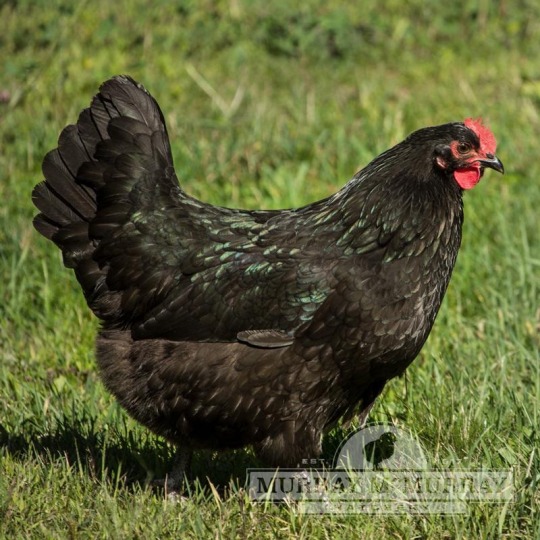
Patrick Marleau - Barred Rock. We used to have Barred Rocks and they’re rather sweet + cool looking.

Dominik Simon - Black Frizzle Cochin Bantam. Don’t ask why.

Sidney Crosby - Blue Cochin Bantam. Not only is it cool looking, but she THICC!
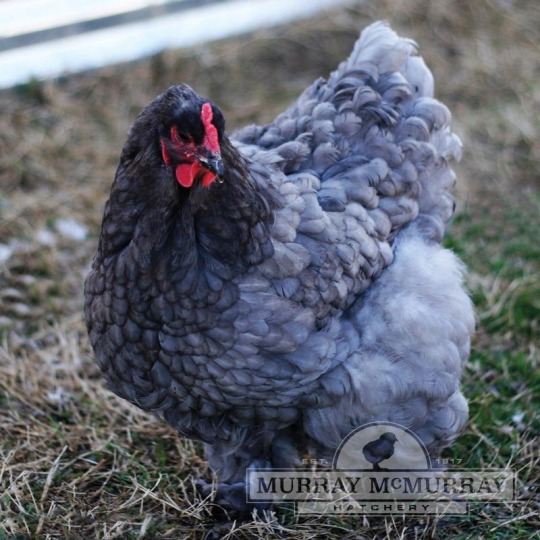
Jack Johnson - Buff Brahma Bantam. Just looks like it’ll fuck you up.

Teddy Blueger - Buff Minorcas. I saw this chicken and my brain automatically went ‘Gasp. Teddy.’ so here we are.
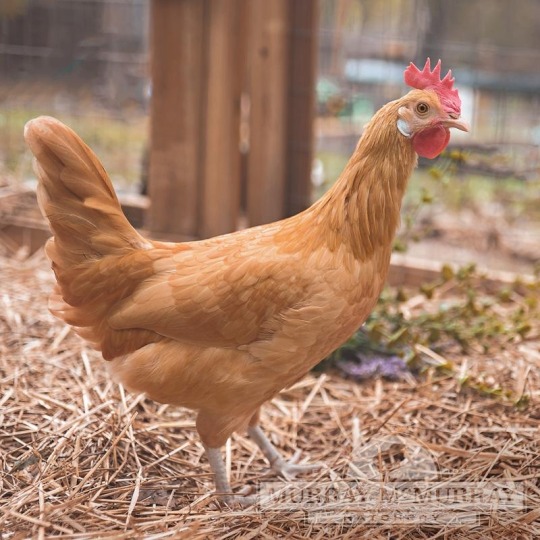
Zach Aston-Reese - Buttercups. Their coloring reminds me of his hair?? They also basically have crowns so yasss king!!

Brandon Tanev - Silver Phoenix. LOOK AT THESE CHICKS!! They give me major TURBO SPEED vibes.
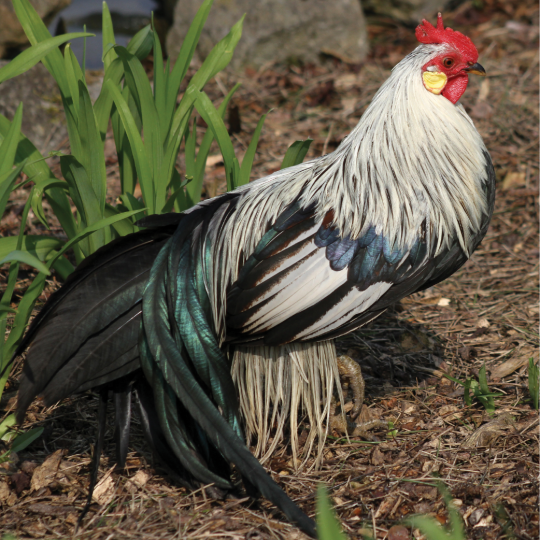
21 notes
·
View notes
Note
The organization as chicken breeds. I personally think Xemnas would be a Brahma but I want to know your opinion!
I have a feeling that you are the one who sent in a bunch of chicken asks and honestly it’s so creative, i love it - I know next to nothing about chickens, so I got all of my information from this website.
These headcanons were based on a combination of characteristics and appearances.
oOoOo
Xemnas - Brahma - often referred to as the ‘king of all poultry,’ the brahma chicken is known for its size, strength and vigor.
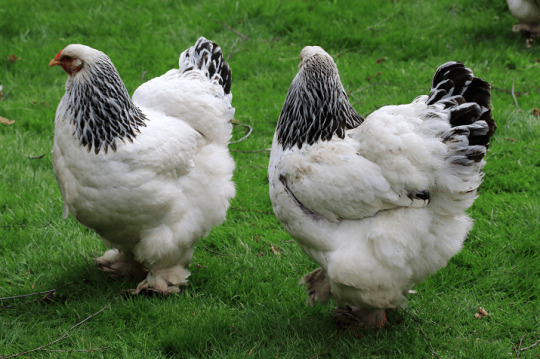
Xigbar - Ayam Cemani - a unique breed in that it’s feathers, plume, skin, bones, and even organs are all black! They are hardy and low maintenance, but can be expensive.

Xaldin - Plymouth Rock - historically the most popular until around WWII. They are docile, broody, hardy, and great layers of eggs.
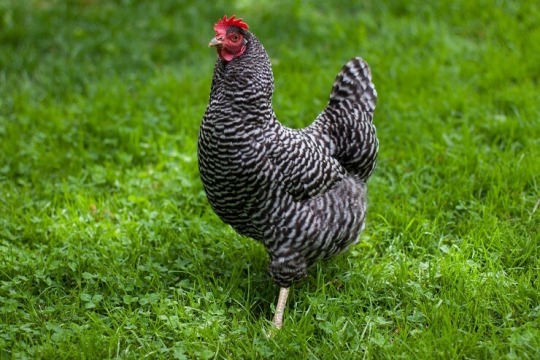
Vexen - Leghorns - another breed that is considered fairly intelligent, leghorns are active breeds that prefer to scratch and forage. Most of the eggs in grocery stores come from these birds!
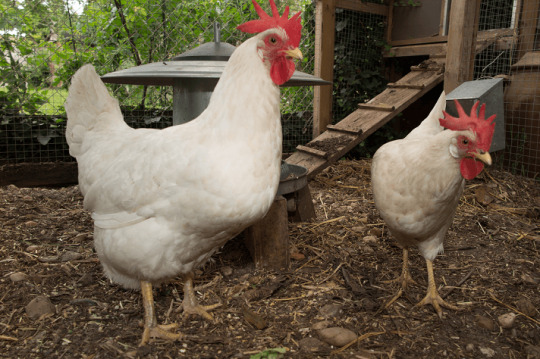
Lexaeus - Jersey Giant - the largest purebred chicken breed. Roosters can reach around 13 pounds and the hens are fairly decent Winter layers.

Zexion - Delaware - known as a decently intelligent breed, they were originally intended as meat birds, but are also good at laying jumbo eggs, they have a calm and gentle disposition, and are known for their beautiful plumage.
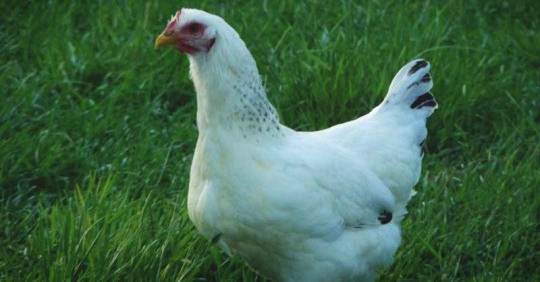
Saix - Cochins - fairly large in size, have an abundance in feathers, and are hardy in colder climates.

Axel - Cubalaya - very well-suited to hot climates and selectively bred to look intimidating and courageous. They are very tame, curious, and friendly.

Demyx - Favorelles - a smaller, but heavier French breed. Extremely docile and quiet, and can lay a few pinkish colored eggs per week.

Luxord - Old English Game - one of the oldest breeds, having been introduced to England by the Romans in the 1st century. Their origins were in the fighting ring, but are now raised for show only.

Marluxia - Silkies - one of the most popular of the ornamental breeds with pure white feathers though black skin and bones. Tame and easily bullied by other birds, but are also extremely motherly.

Larxene - Lakenvelder - a beautiful breed with deep red eyes, flowing tails, and blue legs. Great foragers and very active, but not the friendliest of breeds.

Roxas - Booted Bantam - known for extravagant feathers on their feet and legs, these are almost exclusively exhibition birds. They are friendly and calm when kept as pets.

Xion - Dutch Bantam - one of the smallest bantam breeds, but they can fly fairly well due to their large wings. They are hardy and good layers for their size.

26 notes
·
View notes
Note
What's your opinion on Cochins with the super puffy butt lump thing? Is it detrimental to the bird's structure? Or is it just a harmless huge puff of feathers?
I’m not 100% sure what you’re referring to. Cochin bantams, as a breed, are a round-tailed bird, their tail feathers are curved and high in quantity, so it gives the appearance of a round tail. Some people call it “bob tailed” cochins...but this is a silly marketing ploy (think of Back-Yard Dog-Breeders and “blue nose pits”), all cochins should have a round tail. It ain’t detrimental to their health at all.


So that poof on the back? That is literally all feathers. You can stick your hand in and keep going for a while, and it is the coziest. The round/ball look comes from a combination of having MANY slightly curved feathers and from having a horizontal/downwards angled carriage. Basically the opposite of this:
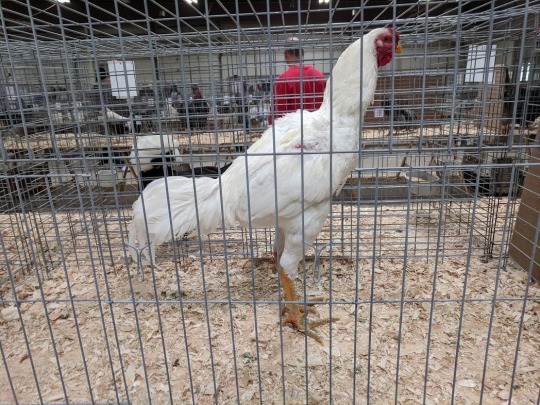
The only thing I have observed as an issue in bantam cochins is that sometimes they need their butt feathers trimmed a wee bit to breed more easily, but they can usually breed on their own anyways. Poor breeding in any feather-legged breed can also result in some issues with ingrown feathers. However on a well-bred bird, such as my Langshans, I haven’t experienced any issues with ingrown feathers on the feet/legs.
So, yep, it’s just a harmless puff of feathers! I think Cochins themselves are super cute, but I personally prefer the sleeker looking breeds.
Hope that answers your question! (Probably went overboard!) Thank you for the ask!
26 notes
·
View notes
Photo

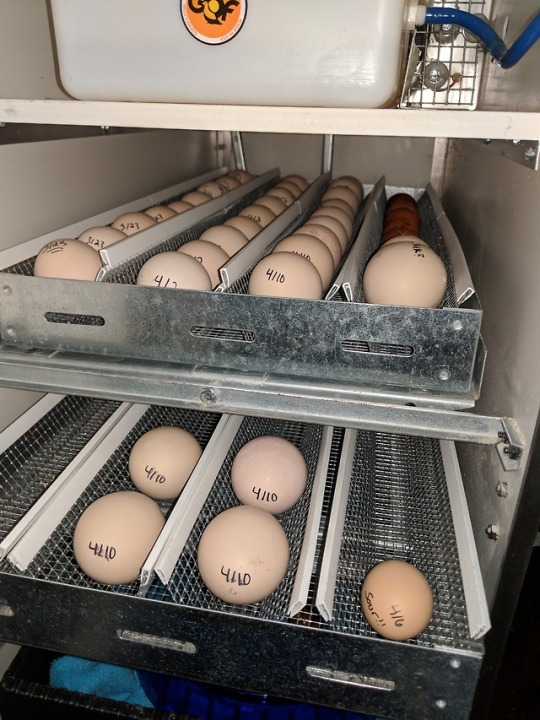
I have officially set all the peafowl eggs I will set for the year. This is more than we’ve had in a few years, but we’re back to an equilibrium where we can handle a bunch of chickies. I always hatch a couple of chicken eggs alongside of the peafowl ones, so that the chickens can remind the peachicks to eat and drink regularly. Without someone to show them, they are prone to forgetting or not trusting food.
I have two VERY special eggs in there.
One is an egg I watched my favorite chicken, Sour, lay. She is a frizzle bantam cochin, and so incredibly sweet and good. I will be hatching a few more of her eggs later this year, when I borrow a neighbor’s rooster, but this one is from HeiHei.
The other is a monstrous peafowl egg (average pea egg weighs 90-110g, this one weighs a whopping 146) that I suspect may have two yolks. It’s rare to get an egg this big, and rarer still for it to actually have two yolks- considering the laying schedule of peahens (every other day rather than the “every day” schedule of laying chicken hen breeds), it’s also possible it only contains one yolk and is Very Large. Since it’s from the blue pen (which only has a two year old male in it), it’s a toss up if it’s even fertile to begin with, but if it is, I am hoping to see it produce twins. Time will tell!!
48 notes
·
View notes
Photo










[ I know I was supposed to update on my chickens as per request but I never got around to it--- But here they are! All grown up now. I finally have some pictures so I thought I’d make a small update thing since someone asked me. Plus I really enjoy talking about chickens. So yeah.
Top two are my two Wyandottes. They are both brown blue laced. For the longest time I thought they both were hens, but then it turned out the cockerel was just really a late bloomer so suddenly he started to put on a different feather coat and then he started crowing. He is a very big heavy boy now. Very curious and always pecks my shoes. Top left is a hen. She is very quiet and calm and easy to handle since she doesn’t mind being picked up.
Row two - my two Pavlovskayas. This is a russian chicken breed, and they’re super cool. The left one is a cockerel, and he is timid as hell. He never lets me pet him or pick him up. I think he’s a bit paranoid since the wyandotte cockerel had been picking on him a bit. Man up?? He’s been shy ever since he was a lil chicken tho so maybe it’s just his personality. Then, on the left is one of my favorites... She is so calm and never makes any fuss about anything. Can easily be picked up and has beautiful feathers. Both of these birds have feathered feet though, and the feet feathers are really big so they look silly when they walk.
Row three - Two out of four bantam Cochin chickens. These are an ‘ unofficial ‘ color, which we refer to as a pearl-colored. They are beautiful. The one on the left is a cockerel and the right one is a hen. Very calm birds with soft feathers. They look so round because they are really small. These chickens have my favorite colors out of all my chickens probably--- it’s hard to choose though.
Row three - Another pair of bantam Cochin chickens. Both of these are boys. And they sound stupid af when they try to crow. The white one is the only one that hatched with the frizzle-gene, so he has ‘ curly ‘ feathers. His color is amazing too. He looks like an actual fluffy cloud. I really wish he was a hen, but I’m still planning on keeping him. Then, the black one is more or less a surprise chicken. I only ordered white and pearly colored hatching eggs, so when a black boy hatched I was surprised. I had to help him out of the egg but he’s done really well. He’s incredibly fluffy and has my favorite shape out of all the chickens. He just looks so round. He also has pretty coloring.
Row four - My two youngest. The left one is the smallest one in the flock ( currently ). She will grow bigger though. I think it’s a hen, but it’s not too late to get surprised. She is a Silverrud Blue, and I really like her speckles. Unfortunately, she is extremely timid, and even catching her to try to tame her is hard. Then, on the right we have a weirdo. I don’t know yet if it’s male or female ( pls be a hen... ). I know it’s a mix-breed that ( if she is a hen ) will lay green eggs. It has such a funny ‘ hairdo ‘ and its legs are thiccccc. It’s a curious bird ( it took the opportunity to walk out of the chicken coop when I opened the door ). It’s thankfully not as timid, and doesn’t mind being picked up. ]
#[ WOP THIS GOT LONG BUT I REALLY LIKE TALKING ABOUT MY BIRDS ]#[ i want....... 20000 more ]#[ careful what you wish for toby ]#[ ahaha no but i'm ready for MORE CHICKENS ]#[ they're good birds honestly ]#[ 5 / 5 would recommend ]#[ but yeah people were asking about my chickens so here is an update thing! ]#ᵃ ᵗᵒᵇʸ ᵖᵒˢᵗ ;; ooc.#longpost //
16 notes
·
View notes
Text
Yesterday I got these two cockerels and they’re the BEST. One, James Flint, is a blue modern game bantam; the other, John Silver, is a blue cochin bantam. This is great because they’re going to grow up to be the same color but TOTAL opppsites.

When he grows up Flint will look like this leg boy but darker:

Silver will look like this round boy:

and I am very happy about this.
241 notes
·
View notes
Text

Type pen ~~!
Got a *little* bit of cleaning done in the outside pen. The woody brush I set the building on is very difficult to work with. And then I used straw, which makes things exponentially worse. But a little is better than none. This type pen gets a good spring cleaning after I get the outside pen all figured out.
But I put the type pen together!
The type pen currently includes my chocolate hen and her pair partner, but I care less about which boy fertilizes her eggs and more about knowing which eggs came out of her. So I'm happy to let her mill about while I figure out where to put the pair next month.
I think I'll also put my barred girls in here after I sell off the extra blues. Again, I care less about which boy fertilizes their eggs and more about ... knowing whether or not those two lay eggs. Just not enough space yet.
But I'm one step closer to hatching season!
I set the small incubator yesterday with a handful of houdan eggs and bantam cochin eggs. Mostly fertility test. I can't wait to have a good dozen or two lavender bantam cochin and get rid of everything else. I just. Want. Large fowl. Lavender!
And today I discover three eggs the sussex cross have been hoarding on me. So I get to wait like three weeks while they lay now before I allow myself to hatch in force.
So ready for spring. So ready to see if my theories prove out.
1 note
·
View note
Photo

Cochin bantams chicks. Mostly blacks but carry for blue. (at Evermore Ranch) https://www.instagram.com/evermoreranch/p/BxIjHtqA0VG/?utm_source=ig_tumblr_share&igshid=hzuoc0312001
0 notes
